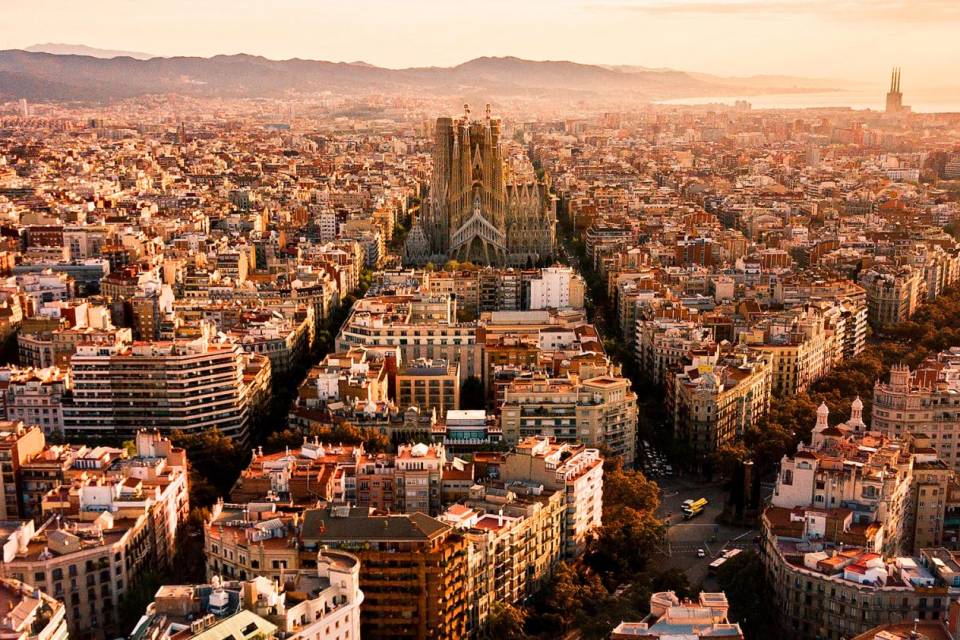![]() The World Heritage Cities Programme aims to assist States Parties in the challenges of protecting and managing their urban heritage. The programme is structured along a two-way process, with 1) the development of a theoretical framework for urban heritage conservation, and 2) the provision of technical assistance to States Parties for the implementation of new approaches and schemes.
The World Heritage Cities Programme aims to assist States Parties in the challenges of protecting and managing their urban heritage. The programme is structured along a two-way process, with 1) the development of a theoretical framework for urban heritage conservation, and 2) the provision of technical assistance to States Parties for the implementation of new approaches and schemes.
Concerned by the multitude of World Heritage Cities facing difficulties in reconciling conservation and development, the World Heritage Committee at its 29th session in Durban, South Africa (July 2005) requested the development of a new standard-setting instrument to provide updated guidelines to better integrate urban heritage conservation into strategies of socio-economic development. The World Heritage Committee relegated this task to UNESCO in view of the fact that such challenges were faced by all historic cities, not only those inscribed onto the World Heritage List, to muster the broadest possible support from the international community, and to underline the role of UNESCO as standard-setting organization.
As part of this policy process that lasted 6 years UNESCO set up the Historic Urban Landscape initiative, an international working group comprising ICOMOS, IUCN and ICCROM (as Advisory Bodies to the 1972 World Heritage Convention) and other partner organizations, including UIA (International Union of Architects ), IFLA (International Federation of Landscape Architects ), IFHP (International Federation for Housing and Planning), OWHC (Organization of World Heritage Cities), the Aga Khan Trust for Culture, IAIA (International Association of Impact Assessment), the World Bank, UN-Habitat, UNEP (United Nations Environment Programme), OECD (Organisation for Economic Co-operation and Development), IDB (Inter-American Development Bank), ISoCaRP (International Society of City and Regional Planners), the J. Paul Getty Foundation and WMF (World Monuments Fund), as well as individual experts from different geo-cultural regions and professional backgrounds.
From: UNESCO.org
![]() Il Programma Città Patrimonio dell’Umanità mira ad assistere gli Stati Parti nelle sfide della protezione e della gestione del loro patrimonio urbano. Il programma è strutturato secondo un processo bidirezionale, con 1) lo sviluppo di un quadro teorico per la conservazione del patrimonio urbano e 2) la fornitura di assistenza tecnica agli Stati parti per l’attuazione di nuovi approcci e schemi. Preoccupato dalla moltitudine di città patrimonio dell’umanità che incontrano difficoltà nel conciliare conservazione e sviluppo, il Comitato del patrimonio mondiale nella sua 29a sessione a Durban, in Sud Africa (luglio 2005) ha richiesto lo sviluppo di un nuovo strumento di definizione degli standard per fornire linee guida aggiornate per una migliore integrazione conservazione del patrimonio urbano nelle strategie di sviluppo socio-economico. Il Comitato del Patrimonio Mondiale ha relegato questo compito all’UNESCO in considerazione del fatto che tali sfide sono state affrontate da tutte le città storiche, non solo quelle iscritte nella Lista del Patrimonio Mondiale, per raccogliere il più ampio sostegno possibile dalla comunità internazionale, e per sottolineare il ruolo dell’UNESCO come organizzazione per la definizione degli standard.
Il Programma Città Patrimonio dell’Umanità mira ad assistere gli Stati Parti nelle sfide della protezione e della gestione del loro patrimonio urbano. Il programma è strutturato secondo un processo bidirezionale, con 1) lo sviluppo di un quadro teorico per la conservazione del patrimonio urbano e 2) la fornitura di assistenza tecnica agli Stati parti per l’attuazione di nuovi approcci e schemi. Preoccupato dalla moltitudine di città patrimonio dell’umanità che incontrano difficoltà nel conciliare conservazione e sviluppo, il Comitato del patrimonio mondiale nella sua 29a sessione a Durban, in Sud Africa (luglio 2005) ha richiesto lo sviluppo di un nuovo strumento di definizione degli standard per fornire linee guida aggiornate per una migliore integrazione conservazione del patrimonio urbano nelle strategie di sviluppo socio-economico. Il Comitato del Patrimonio Mondiale ha relegato questo compito all’UNESCO in considerazione del fatto che tali sfide sono state affrontate da tutte le città storiche, non solo quelle iscritte nella Lista del Patrimonio Mondiale, per raccogliere il più ampio sostegno possibile dalla comunità internazionale, e per sottolineare il ruolo dell’UNESCO come organizzazione per la definizione degli standard.
Come parte di questo processo politico che è durato 6 anni, l’UNESCO ha istituito l’iniziativa Historic Urban Landscape, un gruppo di lavoro internazionale che comprende ICOMOS, IUCN e ICCROM (come organismi consultivi della Convenzione del patrimonio mondiale del 1972) e altre organizzazioni partner, tra cui l’UIA of Architects), IFLA (International Federation of Landscape Architects), IFHP (International Federation for Housing and Planning), OWHC (Organization of World Heritage Cities), Aga Khan Trust for Culture, IAIA (International Association of Impact Assessment), il mondo Bank, UN-Habitat, UNEP (United Nations Environment Programme), OECD (Organization for Economic Co-operation and Development), IDB (Inter-American Development Bank), ISoCaRP (International Society of City and Regional Planners), J. Paul Getty Foundation e WMF (World Monuments Fund), nonché singoli esperti provenienti da diverse regioni geo-culturali e background professionali.
Fonte: UNESCO.org

